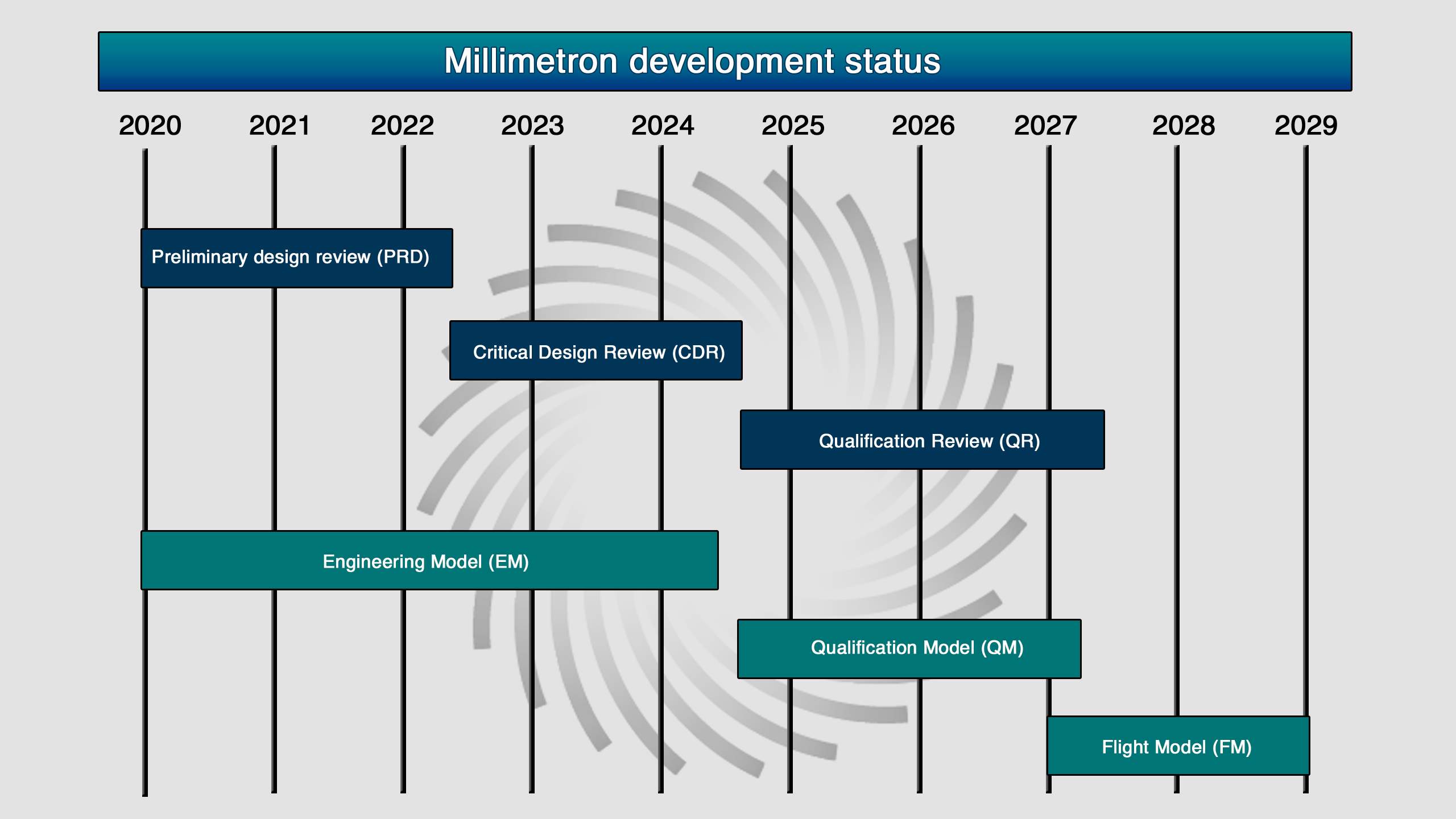
In VLBI mode, ground-based observatories capable of observing in the millimeter and submillimeter ranges will work together with the Millimeter space telescope. Such observatories are usually located in arid regions high above sea level. The success of observations in the Space-Earth interferometer mode will be mainly determined by the number of ground-based telescopes involved in the observation, as well as their distribution over the Earth's surface. Currently, most of the telescopes that are suitable for the Millimetron project participate in the Event Horizon Telescope collaboration. Today it is:
| Antenna diameter | 10 m |
|---|---|
| Antenna construction | solid, deployable and adjustable in orbit |
| Antenna surface accuracy (wave front error) | 6 μm RMS |
| Antenna surface temperature | < 10 K, active mechanical cooling |
| Wavelength coverage | 10 mm – 70 μm |
| Orbit | Halo round Lagrangian L2 point & Near Earth orbit |
| Operational life time | 10 year, including cryocooling >3 years |
| Space Earth-VLBI | 10 – 0.5 mm wavelength |
| Single dish | 3 - 0.07 mm wavelength |
| Provisional launch date | 2029 |
| Mission status | Approved by Russian Space agency |